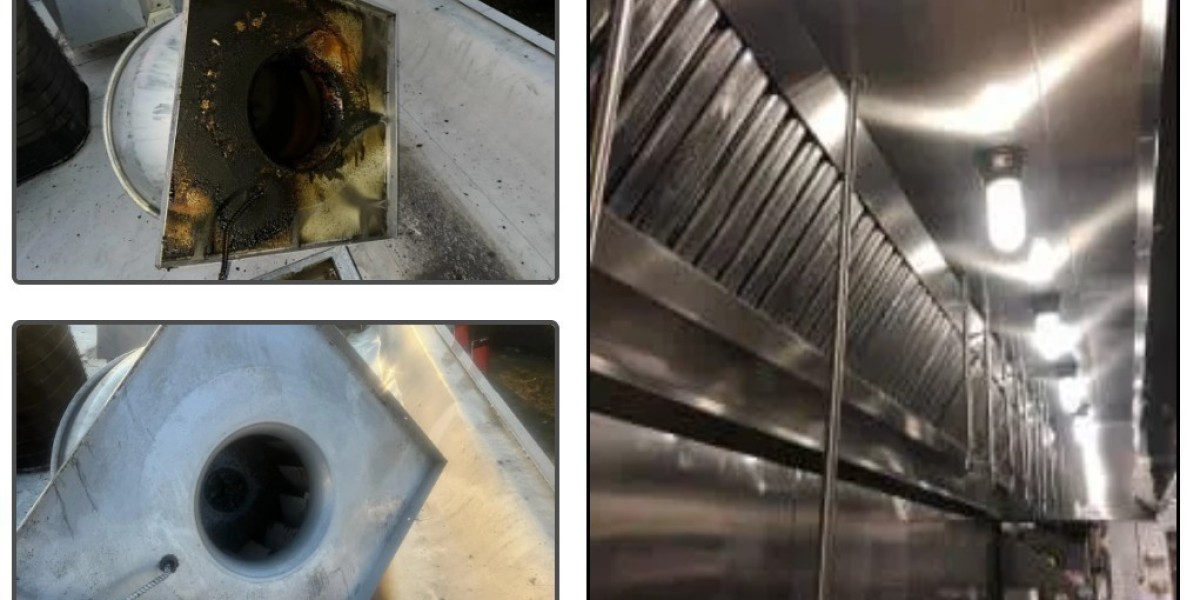Grease build-up in kitchen exhaust systems is one of the leading causes of commercial kitchen fires. For restaurants, hospitals, schools, and catering kitchens, regular kitchen exhaust hood cleaning is not optional—it’s essential. Professionals use specific tools to clean these systems thoroughly and comply with fire safety standards.
In this article, we’ll cover six essential tools used by experts during kitchen exhaust hood cleaning. Whether you manage a commercial kitchen or operate a cleaning service, knowing what’s involved gives you the knowledge to choose the right hood cleaning service or improve your in-house process.
Why the Right Tools Matter in Kitchen Exhaust Hood Cleaning
Cleaning commercial kitchen exhaust systems isn’t just about scrubbing. It requires tools that can handle grease, grime, and hard-to-reach spots safely and effectively. Using the right equipment improves cleaning results, reduces fire risks, and ensures compliance with safety codes.
When the cleaning isn’t done right, grease can accumulate in hidden parts of the hood system. This buildup not only poses a fire risk but can also affect ventilation efficiency and lead to unpleasant odors. Poor airflow can even impact the health and productivity of kitchen staff. So, using the correct tools isn't just a matter of cleanliness—it's part of creating a healthier work environment.
1. High-Pressure Washer
A high-pressure washer breaks down thick layers of grease. Professionals use hot water washers with specialized nozzles to clean hoods, ducts, and fans. Heated water cuts through grease better than cold water. These machines also offer pressure control, helping avoid surface damage.
Using a high-pressure washer also means less reliance on scrubbing, reducing strain on cleaning staff. For larger kitchens, time saved per cleaning session adds up significantly across the year, which can reduce labor costs and improve kitchen uptime.
2. Commercial-Grade Degreasers
Heavy-duty degreasers dissolve grease before the pressure washing step. Professionals spray or foam these chemicals to help them cling to vertical surfaces. These formulas are made for use in food-safe environments.
Choosing the right degreaser for the job can make a noticeable difference. Some are specifically designed for aluminum or stainless steel, preserving the finish of kitchen equipment. Others are formulated for rapid grease breakdown, reducing dwell time and rinsing effort.
3. Scrapers and Hand Tools
Some areas need hands-on attention. Scrapers and brushes clean tight corners, seams, and behind filters. Flat scrapers, wire brushes, and pads help remove stuck-on grease where machines can’t reach.
In places like hinges, corners, and gasket edges, scrapers offer control and precision. Experienced technicians know where grease hides and which tools work best without damaging equipment. Regular manual cleaning in problem spots can also help extend the life of filters and fans.
4. Vacuum System with HEPA Filter
After removing grease, pros use vacuums to clean ducts and fans. HEPA filters trap fine grease particles and keep them from reentering the air. These systems help improve air quality during and after cleaning.
A clean exhaust system isn’t just safer—it also performs better. Grease buildup in ducts can cause airflow restriction, forcing fans to work harder and increasing energy use. Removing debris with a vacuum helps preserve mechanical components, avoiding breakdowns and costly repairs.
5. Access Panel Installation Tools
Some duct areas can’t be cleaned without access panels. Pros use rivet guns, metal cutters, and screwdrivers to install them when needed. This ensures the full system—not just visible parts—gets cleaned.
Without access panels, grease can accumulate deep within the ductwork, creating fire hazards and inspection failures. Installing panels also makes future cleanings easier and faster, reducing downtime in busy kitchens.
6. Inspection Mirror and Flashlight
A job isn’t done without an inspection. Flashlights and mirrors help check hard-to-see spots. Some are telescoping, letting cleaners look deep into ducts and fans. These tools help confirm that grease is completely gone.
Even a small amount of remaining grease can become a fire hazard over time. Regular inspections with the right tools help maintain cleaning standards and can catch problems early—like worn insulation, loose wiring, or fan issues that may otherwise go unnoticed.
How These Tools Work Together
Professionals clean in a sequence. They apply degreaser, use a washer, scrape stubborn areas, vacuum debris, and inspect everything. If parts of the duct are hard to reach, they install access panels.
This integrated method ensures no step is missed. Each tool contributes to a complete clean, reducing fire risk and helping kitchen systems operate more efficiently. Without this full process, key areas may remain dirty, even if they look clean from the outside.
Choosing a Reliable Hood Cleaning Service
When hiring a hood cleaning service, ask about their tools and methods. A reliable company uses professional gear and follows safety standards. Ask if they install access panels, provide before-and-after photos, and use HEPA vacuums.
Make sure they follow a documented process and offer service logs or inspection checklists. Some cleaning services even use digital inspection cameras to document their work. Choose a provider who takes cleaning seriously, communicates clearly, and understands the specific needs of your facility.
Safety and Compliance Matter
Grease fires spread fast. A clean exhaust system lowers that risk. It also improves air quality, reduces energy use, and helps meet fire codes. Commercial kitchens in schools, hospitals, and restaurants must make regular cleaning a priority.
Dirty hoods can also cause equipment failures and reduce the life of fans and filters. Investing in regular cleaning is a proactive measure to avoid bigger problems later.
Failing an inspection can lead to fines, shutdowns, or fires. That’s why many operators work with trusted providers on regular cleaning schedules.
Final Thoughts
Kitchen exhaust hood cleaning isn’t just about how things look—it’s about safety. With the right tools, professionals remove grease build-up and lower fire risks. From pressure washers to mirrors, each tool is important.
If you run a commercial kitchen, take hood cleaning seriously. Use this guide to check your current process or ask better questions when hiring a service. The right tools don’t just clean—they protect kitchens, workers, and guests.
Need help finding a qualified hood cleaning service? Choose one that uses all six tools and meets safety standards.








